The following Articles and Images have been added to the database
Lanark County Interval House and Community Support is offering the chance to win $100,000 with their C.R.A.V.E electronic raffle! LCIHCS has had to cancel all in-person fundraising events and activities due to Covid, and at the same time the pandemic has had a disproportionate effect on women — incidences of gender-based violence are on the rise, they have seen a 75% increase in crisis calls, and the need for donations is high.
C.R.A.V.E stands for Community Rules Against Violence Everywhere. LCHICS hopes the raffle will be a reminder that gender-based violence is an unfortunate reality in our community. Raffle tickets can be purchased for $100 each from <craveraffle.com> starting on February 15, and one lucky player will win $100,000! The draw will take place via Facebook Live at noon on June 16, 2021, and all proceeds will go to LCIHCS. For more details, visit <lcih.org>.
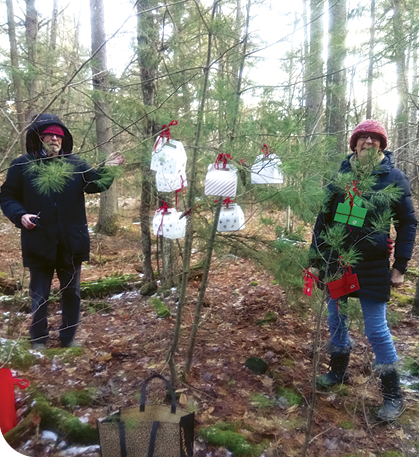
Yesterday I could have sworn I was an extra in the movie Groundhog Day, but today I realize that, just like the proverbial river that is never the same for an instant, life moves on and it’s all completely different every day. So here goes “different”.
Yesterday the woods were grey, dripping dreck down the back of my neck, but this morning there are new tracks marking the elusive deer highway that is a never-ending draw for the dogs. They have this theory that if they follow the tracks the deer will be standing waiting for them. No end of exhortations to “get back here this very minute!” is enough to deter them, so I have to wait until they discover the sad truth for themselves. “Told ya so” also falls on deaf ears.
As much as we have fallen into a routine, they look daily for some new excitement. The squirrels provide a new experience every time they arrive at the feeder. Diva leaps about four feet high in her attempt to drive them away. It’s always different, always exciting, always a new and totally blasé squirrel. If the squirrel fails to elicit a response, we can count on the cat to meander into view and set off a small chase. She’s as nonchalant as the squirrel, but hey, it’s new and different, and that’s all that matters.
We’re fired up about Valentine’s Day. We rarely celebrate in hearts and chocolate fashion, but it would be a fine thing to try. I’m thinking the beer and chocolate experience might be totally different. I’ve got a recipe for a porter cheesecake that beats any other one I’ve had. However, it feeds an army, so I’d have to do some non-essential travel and dole it out to others. That would actually be essential travel though, or that cheesecake would migrate to hips pretty fast!
Our culinary excursions have extended to A&W for lunch. Exciting, eh? That’s definitely different, since otherwise it’s sandwiches at the kitchen table. Further, no dishes to wash is indeed exciting. We’ve even bent the rules and had breakfast pancakes for dinner. Eaten in the dining room with low lighting, pancake supper takes on a whole new ambiance. We pile on whipped cream, something reserved for special occasions. Then we pour a soupçon of white wine to add to the celebration. Breakfast never tasted so good.
We had a wonderful time at Christmas decorating trees in the woods and exchanging gifts with good friends outdoors while we sipped hot drinks and ate shortbread. We’re thinking it might be a good thing to do for Easter. It would clear the winter cobwebs and be something to anticipate before we all get in line for vaccines. (That is going to happen; just you wait, Henry Higgins).
Creativity has to come into this equation, so I’m gathering my old dishes in preparation for mosaic work on birdhouses for the April MVFN auction. It’s been a great way to clear out some old china and turn it into something worthwhile. Every house I’ve made is different than the others, and I can’t wait to get started on this new project.
Every day we need not look far to find something completely different than the previous day. That’s what makes life exciting. If you find yourself in a blue funk, you need to open the door and look for the one thing that wasn’t there yesterday, even if it’s just the smell of fresh cold air, a ray of sunshine making a shadow you’ve never seen before, or the light on one small snowflake. If that doesn’t do it for you, do what a little boy I know used to do: he’d put his boots on the wrong foot and walk in the snow to make crazy tracks. Whatever it takes, every day can be completely different and just a little bit less like Groundhog Day.
Birdhouse Auction, You Say?
Look for the ad and article in this month’s Humm; it’s been in Hummail, in The Millstone and touted about, so get busy on something different and you will be making a contribution to the Mississippi Valley Field Naturalists’ Cliff Bennett Bursary as well as joining in the community birdhouse auction. You’re only bound by your imagination in Functional or Decorative creations, with kids getting special attention in both categories. Go down the rabbit hole of YouTube to see the thousands of ideas you might want to pursue. Everyone will see their creations displayed both online and in local store fronts for a couple of weeks before the auction closes in late April. Then stand back when the spring birds arrive and find this whole area becoming birdhouse heaven! Check out <mvfn.ca> for details or email me at <aljones@xplornet.com>.
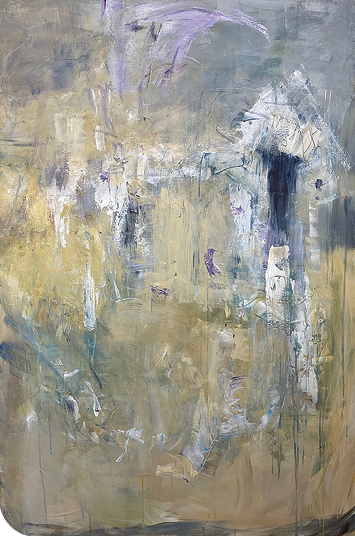
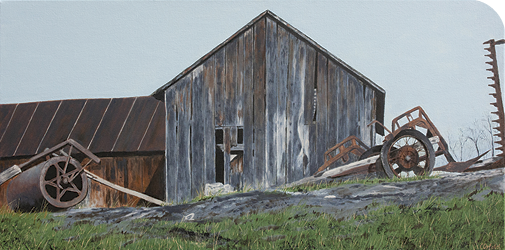
Mary Pfaff: Companions
From February 17 to March 26, Sivarulrasa Gallery in Almonte is pleased to present Mary Pfaff: Companions, a solo exhibition of new paintings by Almonte-based artist Mary Pfaff. The Gallery is thrilled that this exhibition will include, in addition to new smaller works, four new 60-inch canvasses entitled Beyond, Home, Uncertainty, and Conversing with the Trees.
Mary Pfaff earned her Bachelor of Fine Arts (with distinction) from the University of Ottawa in 1990. Her nonrepresentational paintings and drawings have an atmospheric, lyrical quality, evocative of themes in nature and her personal life. Her aesthetic is inspired in part by the Japanese notion of wabi-sabi, where beauty is seen in imperfection and impermanence. The passage of time, fragility, and the interplay of light and darkness are all recognized and honoured in her work.
Everyone is invited to an Artist Talk and Virtual Vernissage on February 24 from 7–8pm. Mary Pfaff will speak live via Zoom about her work and inspiration. You can join from the comfort of your home through a video link — email <info@sivarulrasa.com> and you will be sent the link. For more information, visit <sivarulrasa.com>
Please note: if the current Ontario lockdown is lifted, viewers can see the show in-person during regular gallery hours (with physical distancing, masks, hand sanitizing, etc.). Please check the website for updates. Sivarulrasa Gallery is located at 34 Mill Street in Almonte.
Paintings by Catherine Orfald at the Perth Library
Paintings by Catherine Orfald are currently being exhibited at the Perth & District Union Public Library at 30 Herriott Street. The exhibit will run until the end of April, and will be available for in-person viewing once the Library gets the go-ahead to reopen to the public.
The artist is donating 10% of the sale price of any painting purchased during the exhibit to the library. She also explains that: “My experience with CPAWS-OV DRAW inspired a couple paintings hanging on the walls, so if these are purchased during the exhibit I’ll donate 20% of the sale price to CPAWS-OV.”
You can keep in touch with the Library and their status by visiting their website <perthunionlibrary.ca> or finding them on Facebook or Instagram.
2021 MERA Award of Excellence
Every two years since 2009, the MERA Schoolhouse puts out a special call to all artists living in this area. They are invited to apply for the very generous award of $1000 given to acknowledge a body of work demonstrating exceptional artistic skill, originality and quality.
The application is open to artists working in fine arts and fine crafts. It is specifically open to residents of the Townships of Lanark Highlands, Tay Valley, Drummond/North Elmsley, Central Frontenac, North Frontenac, and the Town of Perth. Previous non-winners may apply again.
The prize is funded in large part by the generous donation to the Perth and District Community Foundation (PDCF) made by Chris and David Dodge who conceived the award. The award is administered and given by MERA.
Applications for the 2021 MERA Award of Excellence will be accepted until April 30. For details, visit <meraschoolhouse.org>, email <meraschoolhouse@gmail.com>, or write to:
MERA Award of Excellence, McDonalds Corners/Elphin Recreation & Arts,974 Concession 9A Dalhousie, McDonalds Corners, ON, K0G 1M0.
MERA is a not-for profit charitable corporation dedicated to enriching the lives of members of its community of all ages by providing and encouraging a variety of opportunities for personal expression, instruction and appreciation of the visual and performing arts.
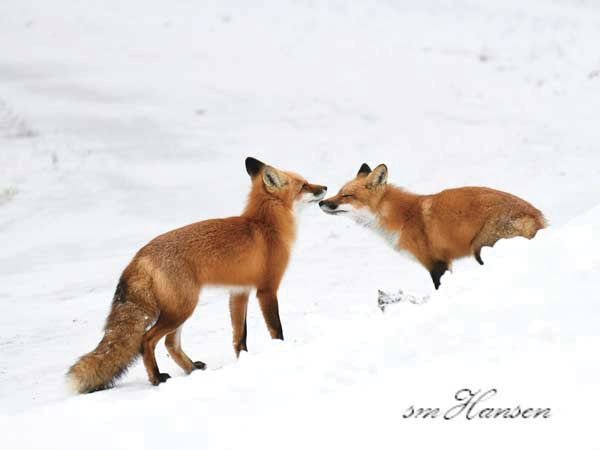
Jeanne d’Arc Labelle sent in this thoughtful note and hopeful poem in response to our Winterwords invitation to write. She says: “I see the turbulence of the pandemic posturing on the unknown, all the while… its isolation being spun into hope, and gratefulness; and in small and big ways, all around me. I wondered, could such a context be captured in ‘Tritina Poetry’? Tritina poetry is choosing three words (1,2,3), to be used in rotation, at the end of three sentences, using three stanzas, plus one full enveloping sentence containing the three words in original order.
For example: The first stanza (1,2,3), second stanza (3,1,2) third stanza (2,3,1). The sentence uses the same words, in the original sequence (1,2,3).”
Do not doubt this—the old habits, we will bring BACK
What may have been thought lost, is just—being made BETTER
because we all pull together during a pandemic—here in the VALLEY
That each community member, in this maple rich VALLEY
breathes heart with pounding hope—across and BACK
because mindfulness, distancing, and wearing a mask— is, until things get BETTER
No handshakes, no hugging no socializing—turns out, it’s for the BETTER
So, folks from everywhere seek each other on ZOOM or VIDEO, in the VALLEY
Soon, everyone will rejoice for this shift in history—when normal is brought BACK
The pandemic has spun people into bewilderment, but individuals keep pushing BACK the fear and turning it into opportunity, to BETTER align the variance between necessity and impulsive accumulations, and—all in keeping with the love and caring generosities reflected onto one another, as the VALLEY’s best.
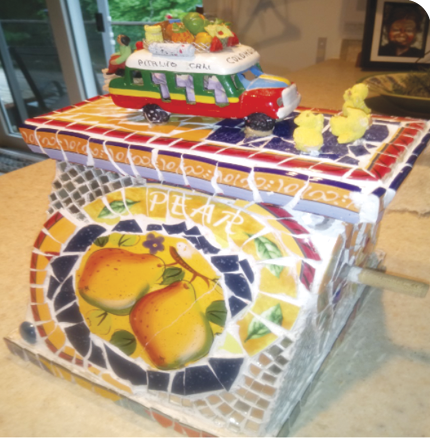
The birdhouse auction in support of the Mississippi Valley Field Naturalists is only three months away, and crafters are scouring their treasures for the makings of a unique creation to tempt bidders. While a classic wooden house will suffice, a dwelling that once was a watering can or a toy could up the interest. Turn children loose with a box of odds and ends, and their imaginations are limitless. An old key will become a perch; an assortment of bottle caps will become shingles; a milk carton will be decorated with mock windows and a little door that opens.
Proceeds from the sale of donated birdhouses will go the Mississippi Valley Field Naturalists (MVFN) Cliff Bennett bursary, which is offered annually to assist graduating high school students pursuing post-secondary studies in a field related to the natural environment. If you’ve got kids, this is a great way to engage them in a creative endeavour that may one day help them or their friends pursue their dreams!
No idea how to get started? YouTube is awash in suggestions! However, for a novice, purchasing a birdhouse kit to decorate might be the easiest route, especially for children. Check out the MVFN website <mvfn.ca> for bluebird boxes, or explore your local hardware store or book store’s offerings. These kits are usually made of easy-to-assemble wood; a project kids can do with minimal tools and a guiding hand. Bare wood begs for paint, and here’s where the fun begins. Using basic acrylic paints, children can turn that house into a castle, a cottage, or anything in between. Paints are available in small quantities — they mix easily, and cleanup is quick. Check out JB Arts in Almonte <jbarts.ca> or Art & Class in Perth <artandclass.ca> for supplies. For the most expert advice, a visit to Gilligallou Bird <gilligalloubird.com> in Almonte’s Heritage Mall is in order. They sell houses that can be decorated and adapted to attract specific birds.
The auction will accept entries in two categories: functional and decorative, with a division in each for children under 12. Entries will be received the first week in April, with photos displayed online as well as the actual items placed in local stores. There is no charge to enter the auction.
For more information, please call Glenda Jones at 256–6479 or visit <mvfn.ca/birdhouse-auction>. Your birdhouse could be completed in two days! You’ll have it ready before the end of the month, and will be starting another…
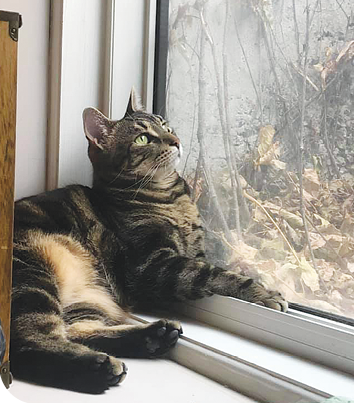
Last week my therapist said something to me that struck me as exceedingly important. We were talking on the phone and I have a famously poor memory, so I said, “Whoa. Can you hold on a second? I need to write that down.”
He said “Of course,” and I reached over my cat, who was sitting on the coffee table watching me, to grab a pen. Or rather, I tried to reach over Ellie to grab a pen, but she wasn’t having it. She gave my wrist a nasty little “love” bite. Her little teeth pierced my skin like a mouthful of sharp, steely needles, and I yelped, “Ow! You little bugger. Get down!”
She did, jumping down to the carpet, then trotting off into the kitchen.
“Everything okay?” my therapist inquired.
“Oh, fine,” I told him. “My cat just gave me a little nip. She thinks I’m not paying enough attention to her or something.”
“Ah, I see.”
Ellie had drawn blood, I noticed, when I put pen to paper. “Lacking the cognitive wherewithal,” I said aloud, and printed on a fresh page in my small Mead notebook. We’d been discussing how and why it was that some people are unable to realize their inactions can be harmful to someone else. It was a breakthrough moment for me. It made perfect sense and would be helpful. And I was dripping blood droplets on my notebook.
We wrapped up our 45-minute session with some hopeful talk of September vaccines, then I tended to my wound.
And of course when I found Ellie she was up in her back window, stretched out languidly, her eyes shining just so — a gentle, knowing yellow — her head tilted up toward the light, where she was either tracking some birds or waiting for them. It’s impossible to be angry at Ellie at such moments, no matter how fierce her bite may be when she’s bored or wanting attention, or just in a snoot. She meows without making a noise, when she notices me, as if to say, “I’m here, but busy-busy, important things to do and see.” It’s a sort of apology. And I can’t help but watch her for a little while. The way her elegant form looks both relaxed yet poised to pounce, should the need arise. Her fur coat of marbled tans and browns. That gentle glimmer in her eyes.
I don’t need to re-read the science to know that spending just a few minutes in the presence of a cat lowers your blood pressure.
I’ve heard people describe life in lockdown as a kind of hell. I feel for people when they say this. Sincerely. Especially older or disabled folks, and those who live alone. The loneliness and isolation can cause severe mental duress. I’ve talked to my therapist about this, and he says it’s certainly one of the biggest concerns among mental health professionals.
At such times, I always tell him about my good friend who is an ICU nurse at Kingston General Hospital. She gets pretty exhausted sometimes, but does her job efficiently and compassionately, without complaint. So, I can’t really think of my own life during this global pandemic — as isolated as I am, as lonesome and anxious as I get when the walls seem to be pressing in — as a kind of hell.
My therapist of course believes this is a healthy approach: keeping things in perspective. “Yes,” I’ve agreed with him, then he’s quick to remind me to get out for as many walks as I can, despite my physical pain. “Do what you can,” he says. “The cardio will do you wonders. Physically and mentally.”
We talk once a month. For about an hour, normally. I talk to Ellie far more often. And it might seem silly, but talking to my cat — this mostly gentle, loving, and playful little soul — is helpful.
One day I was reading Barack Obama’sA Promised Land in my chaise lounge (a pandemic gift to myself) and I barked a laugh and paused to tell Ellie, who sleeps in the chair next to me while I read: “Ha! Listen to this — ‘And what became abundantly clear as soon as Sarah Palin stepped into the spotlight was that on just about every subject relevant to governing the country she had absolutely no idea what the hell she was talking about.’” I laughed again. Ellie looked up at me. “She was a silly woman,” I told her. “You’re far, far smarter than Sarah Palin, Ellie Bird. And cuter too.”
Have no illusions, a cat is a lovely companion. Many times at night I wish I could camp out with my spouse, put on a silly movie, and snuggle and laugh and just be together. Give her a back rub. Fool around. But I don’t have a spouse anymore. That fact has caused me a great deal of pain and grief over the last eight years, and the isolation of a pandemic, the loneliness, the fear, the anxiety — they all heighten that pain, that aftergrief. If I am personally experiencing any sort of “hell” because of this deadly virus, that would be the hardest thing.
My therapist has reminded me — although not as often as I remind myself — that grief is unique, and my pain — your pain, your suffering, anyone’s — is not small or petty; it all matters; we all matter. It’s not a matter of comparison. If you’ve a wound, it needs to be tended to, just as other people’s do.
It helps me to hear this from a very good mental health care professional, if only once a month. I need the reminder. Just as I need Ellie’s sweet and restful company. In the case of Cat vs. Therapist, the verdict is inherently beneficial for everyone: all parties are winners.
Seeing that on occasion we go off on tangents during “my” sessions and get talking about our shared admiration for the music of Leonard Cohen or the writing of Julian Barnes, I bet my therapist would agree. He gets some joy from our chats as well. And he can feel good too, knowing, at least, that he’s helped another of his patients maneuver over some of the bumps along the way.
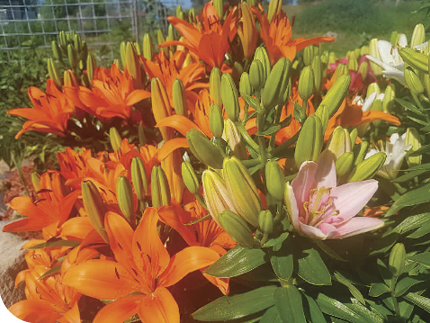
Community Blossoms is a new flower share program developed by Johnny Slack and his wife Emma, owners of Calabogie Family Farm. With the knowledge that the pandemic is putting stress on the community and that more people are having to turn to food banks for the first time, Johnny and Emma stepped up to the plate. They strongly believe that all people deserve to eat fresh, nutritious food and feed their children with the healthiest food as well.
The purpose of Community Blossoms is to lift the community’s spirits with flowers and use 100% of flower share profits to provide food for the hungry. The goal is to grow over $5000 worth of fresh organic produce for area food banks all summer long through the sale of about 50 full flower shares.
For each flower share purchased, people receive a bouquet of fresh-picked flowers every week (full share $150) or every two weeks (half-share $75) between late June and the end of September. It’s uplifting to look forward to flowers to keep or give to others during the pandemic while helping to feed the hungry and also helping the bees. Even better, each bouquet will come with an inspiring message about community.
Calabogie Family Farm has partnered with the Calabogie and Renfrew Food Banks for food distribution and is developing a list of sponsors, some of whom have offered to be flower pickup sites. Farm gate pickup will be available once a week beginning in late June. To purchase a flower share, visit <calabogiefarm.com/communityblossoms>
Calabogie Family Farm will update all members by email and on social media with informative videos showing life on the family farm as they prepare the soil, plant, nurture and harvest flowers and produce. They are hoping Community Blossoms will be a program that can be replicated everywhere.
They are looking for volunteers who would enjoy being outdoors on a family farm this summer to help make this possible. Sue Lebrun volunteered last year and says: “I volunteered last spring and summer on your family farm as a way to escape a lot of stress from this pandemic and to give back. I thought I’d go a couple of times, but soon wanted to go a couple of times a week and for the most part helped weed and plant weekly for over six weeks. I realized how wonderful it was to be around this family of organic farmers who in turn taught me more about gardening than I’d learned in my entire life. Johnny, his wife Emma and their adorable daughter are deeply involved in making a contribution to our local community. I invite everyone to get to know them and their entire family. Great citizens of Calabogie and area.”

Jaaron Hamilton sent in this letter to her young son (as well as the photo) as her contribution to theHumm’s Winterwords invitation to write:
By the time that you’ll be reading this, all of this will be a distant memory. Maybe you’ll be reading about it in your history textbook, or watching a documentary about it on Netflix. In any case, there is one thing that is absolutely certain: this was not the year that we imagined. I don’t know what we expected, but this definitely wasn’t it. A year full of hope with your expected arrival, quickly turned to despair, devastation, and uncertainty. We are plagued by so much fear. In this endless barrage of articles and rising case counts, you bring infinite amounts of joy. What juxtaposition! High highs. Low lows.
Little One, this world you have entered is a strange one. Your world consists of the four walls of our home, the familiar streets of our neighbourhood that we walk endlessly (where else is there to go?), and the clinical rooms of hospitals and doctors’ offices. Outside of our house, you know nothing but blue medical masks and the sickly sweet smell of hand sanitizer. When we thought we could gather with family and friends, suddenly we found ourselves just the two of us… and you.
Where there may have been chaos, we found calm. In your tiny snores. In your tinkling laugh. In your grunts and sighs. Your bright blue eyes blink up from below as seasons change outside the window. August… September… October… November… December… tearing off the pages of the calendar one by one. Inside, you learn to stand while outside the world stands still. Introductions through panes of glass. Make it quick! It’s cold outside. Milestones viewed through video calls. Whoops, your screen is frozen again. Hold on a minute while I reset the modem. Roll, crawl, stand, walk. Out of diaper cream? Don’t worry, I’ve ordered it for curbside pick-up. They’ll put it in the trunk for us when we pull up! Warm cuddles in the dead of night with no noise but for the occasional car passing in the distance and the peaceful snores of Daddy in the next room.
Although it doesn’t look like we imagined, we have found unity in the community of moms that live nearby. Moms unite! These are the mothers of the pandemic babies. Wonderful. Willful. Warriors. We stand stronger together looking forward to a better and brighter future. We thought we’d never find each other, but in this digital age we are able to come closer than ever. But still, keep strollers six feet apart. We know things won’t be this way forever, but that does seem the case some days. It’s easy to lose hope in the same day-in-day-out monotony of our weeks. Baby blues? That’s for sure. But we do what we can to look on the bright side. Fast friendships formed in Internet forums and Facebook groups. Not alone. You are not alone. This community is bigger and more vibrant than I ever could have imagined it. The pandemic obscured it, but it’s been there all along. Other mamas like me, with little ones like you. Living, no, surviving, just the same. What we thought would keep us apart, has brought us all together.
Little One, you won’t always know only masks. You’ll make friends outside of our house. You’ll hold hands with and hug those you love. Two metres apart is only temporary. You’ll stride bravely into the world to find your place. We haven’t seen “normal” for almost a year and in the promise of its return, there is so much to look forward to. We take you on languorous morning drives past all of our favourite places now — the local coffee shops, museums, bookstores, and libraries. One day, we’ll be able to take you inside so you can see for yourself. By then you’ll be walking and talking all on your own. Those little hands that hold onto our fingers will grasp whatever they can. Curious and bold. Trouble maker (she says with a wink). Your world will explode in the most beautiful way as you take in all that this place has to offer. This place is exceptional, and who better than you to discover it. Let’s look forward to adventuring together.
Love always, Mum.
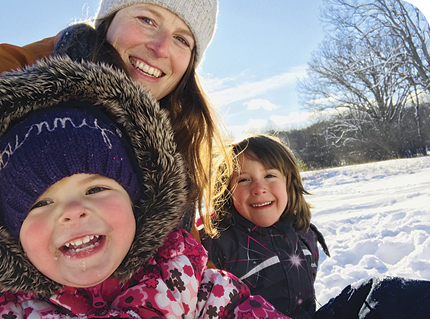
I had a bit of the “blue Monday” feels as I sat down to write this month’s Little Humm column. But the whole point of this column is to add some joy and encouragement to all my parenting peeps in the Valley. So in an effort to find inspiration for February, which is currently forecasting a continued lockdown and possibly a polar vortex, I decided to survey the kids of the Ottawa Valley to see how they think we should handle this situation. And it turns out, they’re not as upset about lockdown in winter as we grown-ups.
First, I checked in with my own kids. I asked them what their favourite thing to do in lockdown is. My 2-year-old replied, “If I get in a cage I will be sad.” Oops, sorry honey, we’re already in lockdown and nobody is putting you in a cage. But yes, thanks for expressing how we’ve been feeling for the last ten months: caged and sad! Once I helped to clarify my question, however, she added that her favourite things to do are to “play tea parties with my toys and drink hot chocolate with chocolate chips”. Yes, she and more than thirty other kids from Arnprior to Westport pitched in to give me their thoughts on how best to find joy in lockdown. And it all really boiled down to embracing the snow and ice, getting cozy, letting out those bad feelings, and getting back to play!
Embrace the Snow & Ice
Although grownups are missing sun vacations and wishing the winter away, the kids of the Valley come alive this time of year. After all, we’re Canadian, eh?! My 8-year-old neighbour Hunter summed it up well. “My favorite things to do,” he says, “are to go skating on our outdoor rink and practice my stick handling and take shots on the hockey net!” Rory (10) and Egan (8) both agreed that playing on the outdoor rink is their top choice while Abby (7) and Isabelle (5) added that skating with family is the best way to spend winter in lockdown. Now of course we don’t all have access to an outdoor rink. But for the rest of us, there’s always the snow. Which was by far the most popular of the lockdown activities.
Trystan (6) and Gabriel (8) told their mom that any kind of snow fun is their favourite. Noah (9) and Jack (7) like to “hit the jumps we made in our yard on our skis.” Charlotte (10) made two small sledding hills in her yard and little Patrick (17 months) likes to go for rides on the doo doo… (I think that’s toddler for skidoo). Ana (5) made maple taffy on snow with her family, and then, of course, there are the snow forts.
Evan (8) says his favourite thing is “making a snow fort in the backyard”. Alice (6) and Harriet (8) took this to the next level and built a snow fort with thirty recycled Christmas trees! “My favorite thing is building snow forts and having snow fights,” said Joseph (4), while his little brother Lochlan (3) added that “I love Joseph frowing snowballs at me”. Wyatt (2) just moved here from sunny South Africa but decided that “making snowmen and reading” are the best quarantine activities. And creative Orlaith (5) suggests that when you make snow forts, you can add “snow carriages so you can play king and queen outside… and use food colouring ice cubes to be jewels… but also, pillow forts!”
Get Your Cozy On!
Ah yes, the infamous pillow fort. I spend my days returning cushions to their rightful homes just to turn around and be greeted by a guard or a queen at yet another cushy creation. However, I have to confess that getting your cozy on is one of my personal favourite lockdown activities, and thankfully my daughter Hannah said snuggling is one of her top choices too. “Me and my mommy had a sleepover in lockdown.” Yes, we need to work on her grammar, but her hospitality is off the hook… “I got all my cozy blankets and stuffies and then we snuggled together and watched a movie in our basement and I planned all our favourite snacks.” Nora (7) has figured out that “staying in pyjamas all day” is a great way to cozy in. And of course, in lockdown, we need our books! Little Ayla (2) said reading books is her top activity. Quite impressive for a two-year-old. But if you want to take getting cozy to the next level, both Wyatt (4) and Ruby (3) say that playing with their dogs is the best part of lockdown. The snuggle is real as they say, so don’t worry if all these ideas don’t beat the blues for you, the kids have got you.
It’s okay to feel blue!
I have to say the best little nugget of advice came from Llewyn (2) who said we should just “throw balls or punch a pillow if you get mad”. Now, I have the pleasure of knowing this little guy, and he’s SO mellow. This was the last thing I would expect him to say, really, but he reminded me that it’s okay to feel sad, mad or disappointed during this time — you can just punch a pillow or something to process those feelings and move on. I personally always over-complicate it and judge my negative feelings. So thanks for the counseling little buddy, the cheque’s in the mail.
Eat & Play
When punching pillows or snuggling them doesn’t work, there’s always treats and good old-fashioned play. Piper (4) has it down! She says, “My favorite things are to eat, play with toys, play with mommy and when I’m good watch a show.” Yaas, girl. Her brother Sawyer (6) adds that card games are a personal favorite. Avery (6) says playing with dinosaurs are fun, while Arclan (6) says “action-figure hunting” is awesome. Just get someone to hide your action figures around the house or in the yard and you have to rescue them. Costumes and props welcome. Otis (6) likes to work on his art, and he was just featured on CTV Ottawa! John (8) likes to play LEGO, do crafts and read books, and Sam (6) likes those things as well as dinner with his family. He says, “I don’t mind lockdown”.
The moral of this story? Turns out I know a lot of 6-year-olds! Just kidding. That’s not it. Instead of getting too blue, let’s just forget our expectations for a normal winter, grab some action figures and hide them in the yard. Make hot chocolate with chocolate chips and then snuggle in our pillow forts. Let’s allow ourselves to feel our feelings but then grab a treat and go play in the snow. Just do it! The spring will be here before we know it and we’ll look back nostalgically on that “winter in lockdown” when we had too, I mean, soo much family time. Leona (4) said “spending time with family” is the absolute best part of lockdown anyway. Thanks for reminding us adults of the important stuff, kids.

Just before Christmas, I picked up a copy of Vickie Walsh’s Guide to Hiking Trails in Ottawa and Region. As I perused the pages and learned about many trails with which I had not yet become acquainted, it occurred to me that Vickie’s insights would be a wonderful addition to theHumm. Imagine my delight when she responded to my enquiry to say that she had just moved to Almonte and was interested in collaborating! Her background is varied and fascinating, and her dedication to promoting safe and environmentally-conscious outdoor activity is inspiring.
theHumm: Based on how much work you put into your publications, website and blog, people could be forgiven for thinking that helping folks hike is your full-time job. Can you tell us a bit about what you actually do for a living, and how you integrate your passion into your life?
Vickie Walsh: GirlGoneGood® may be where all my interests collide, yet it’s not how I make a living. I’m a military veteran who works full time as an IT consultant and finished a science degree in nursing last year. Admittedly it sounds like an odd mix of interests; however, adventure, media and health are the backbone of GirlGoneGood. On average, I’ll put 4-6 hours a day into GirlGoneGood on top of working and nursing studies. Thankfully, I’m part of the 5am club, which leaves time to exercise, fulfill orders, and create resources before work starts at 8am. In the evenings I’ll spend time responding to questions and comments. That community interaction is ridiculously rewarding — I feel like we’re a family of sorts. I’ve finally started taking Sundays off completely though!
The subtitle on your website is “Wellness + Wilderness”, and I see that “portions of every sale are donated to mental health supports and local conservation efforts”. Why is it important to you to link those two concepts, rather than just addressing one or the other?
In my mind, one doesn’t happen without the other. Taking a single step in nature instantly provides calm and grounding when we take a moment to listen. They are interdependent aspects of life. There is an abundance of science that highlights the benefits of being in nature. And since nature is such an incredible gateway to our own wellbeing, and such a vital component to mental health, isn’t it in our best interest to protect and care for her? Donating over 80% of proceeds from GirlGoneGood is my way of paying it forward and contributing to the wellbeing of our community.
theHumm covers Lanark County, much of Renfrew County, and West Carleton. What are some of your favourite hiking spots in that area, and why?
In Renfrew County, my go-to escape is Deacon Escarpment. With their gorgeous off-the-grid cabins, abundance of trails and private lake — it’s paradise. No WiFi; it’s the perfect spot to “disconnect to connect” as they say. Not to mention it’s a fantastic spot to enjoy the sunset with gorgeous lookouts, and there’s always wildlife to watch for. Thankfully they offer day-use as well for those looking to hike and snowshoe. Closer to home it’s the Wabun Lake–Limestone Lake–Sugar Mountain 18km loop that wins! Mostly unmarked, it offers forest trails, lake views and a vista lookout.
In Lanark, it has to be Blueberry Mountain, the now popular trail that originally won me over when I met landowner Howard Clifford. We had a good conservation about the land, its history, and his love for it. There is a lot of heart and soul there! Not much can beat that valley view either. There’s also the unmarked trail at Kate’s Lake, which is a great spot to enjoy and reflect by the water. But be warned that reception is poor-to-none and the trail is unmarked.
As for West Carleton, I’ve always enjoyed the tranquility and wildlife at Morris Island Conservation Area. In my mind it looks like a Group of Seven painting that so aptly captures Ontario’s beauty.
Trail Guides for all these trails, including details, directions, and local insights, can be found on my website < girlgonegood.com>.
If you could convey one piece of advice to every hiker, what would it be?
My one piece of advice would be to adopt the perspective that “we are guests”.
We are guests of land/trail managers. Let us abide by their guidelines and rules.
We are guests on ancestral indigenous lands. Let us seek to understand, respect, and actively advocate.
We are guests in nature. Let us care for and protect her, as nature’s health and our own are connected.
Find a longer interview with Vickie, as well as links to her site, at <thehumm.com>.
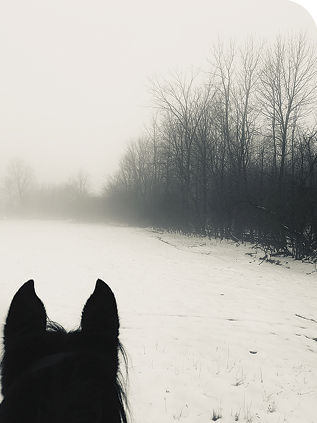
I ride a friend’s beautiful big black horse Izzy out into the fields on a farm east of Perth. It is a gloriously eerie afternoon in late November. A wet snow has fallen on not-yet-frozen ground and now a thick, vaporous veil of fog has gathered over the land.
Izzy is a game companion and I anticipate the adventure we have ahead of us. When the curtain of fog closes around us, separating us from buildings and barns, suddenly I am transported into the pages of childhood books — a girl on a pony, venturing across small fields, passing through portals in thorny hedgerows and onto the damp, dim, mist-shrouded moors — a landscape from which the stories and myths of my ancestors arose. Anything has become imaginable.
The lay of this land is unfamiliar. I have been out only once previously — on a clear day — and have just the vaguest sense of this farm’s terrain and its patchwork of small, sheep-grazed pastures; swatches of ground, bounded by invisible hedgerows that today advance and retreat like charcoal waves, rolling in and out of the fog. There is no horizon, and all reference points, including the ground, have vanished. There is only the movement of a horse under me, the sound of her breathing and a weird feeling of being weightless on the land. We moon-walk through the landscape together, moving deeper into the fog. An opening in a hedgerow bordering the field appears and we pass through.
Hedges and hedgerows have ancient associations with witches, boundaries and boundary crossing. The words “hedge” and “hag” in fact, have intertwined meanings. Hag in Old English, Haag in Dutch, and Hecke in German are all related words meaning “hedge” or “enclosure”. To “hedge-ride” was to have the ability to straddle two worlds — the civilized world of village life and the untamed otherworld — the wilds beyond the hedge. Such talents were associated with witches, hags, “edgy” old crones, and otherworldly beings who inhabited the edgelands and feral places. Is it coincidental that that we find “edge” hidden in the word “hedge”?
In parts of England, hedgerows have been tended and appreciated as integral parts of rural ecologies and histories. Ancient hedgerows are embedded in the British landscape and tell the story of human settlement, land enclosure and use. Hedgerows in Ontario, although different in composition and appearance than their European relatives, trace, through their living lines, our own local history of colonization, land privatization and changing patterns of land use.
Does the tended field keep wildness at bay? Does the hedgerow contain the domestic? Or do they complement one another? Research regularly asserts the ecological benefits that hedgerows provide to soil health, conservation and biodiversity. Yet, in spite of this, humans continue to strip away these remaining vestiges of wild life from rural landscapes, under the monikers of efficiency and yield. But at what cost? Verges and hedges are edge-places where the domestic and the wild mix and mingle. We need feral fringes where wildness roams, control withers and imagination can take hold. We are suffering from tameness and the erosion of wild landscapes that once were steeped in stories that are no longer perceptible. The erasure of the wild leads to an erasure of imagination.
Izzy and I weave through hedgerows and fields, one following the next with a rhythm driven by soft steps and steamy exhalations. Arborous apparitions reach out from the shadowy perimeters, poking through the membrane of my imagination. Is that a howl I hear? Is that a Werewolf emerging from the right? My imagination is being exercised!
Or, just maybe, is it the voice of the hedgerow speaking to me in its own edgy tongue?
We stop under the limb of an apple tree that was likely seeded — with the help of a sheep, cow or bird — in an old fence line a lifetime or two ago, when these fields were first carved from forest by settlers. Now, arcing over my head, the tree’s withered, barely-red apples dangle precariously like earrings. I stretch up, pluck a few, give one to Izzy who bends her nose around, and pocket the others. We step back through the landscape in our cloud capsule — through fields and hedgerow portals, eventually landing back in the sanctuary of the barn.
I drive home along Highway 7 — my mind and body still lit up from my adventure into the wild crannies of new terrains — the physical and imaginal both. The fog has lifted from the land. I see horizons again. Passing by a long, sloping field flanking the highway I notice, suddenly, an old, thick hedgerow — probably a century old — being razed. Two huge slash piles of branches burn — pyres of orange-red flame and ascending soot. Mythic in scale.
Progress and control — a couplet of concepts that has fuelled the colonization of this land and perhaps, too, the colonization of our collective imagination — continue to assert their influence upon the landscape.
How can we learn to become easy with the wild — to relearn her vocabularies? Might we learn to see the unmanageable and uncontrolled spaces in our midst and our minds not as something in need of taming, homogenizing or killing, but rather as something precious and essential — a feral foundation and literal lifeline providing us with the diversity, vigour, creativity and resilience that our domesticated bodies and imaginations desperately need? When and how will we learn to value, attend to and learn from the edgy, peripheral places? It is time for a new kind of Hedge School* to arise, one suited to our times.
*Hedge schools were small, informal, illegal schools, particularly in 18th- and 19th-century Ireland, designed to secretly provide education to children of “non-conforming” faiths. They were often held behind hedges in order to remain secret.
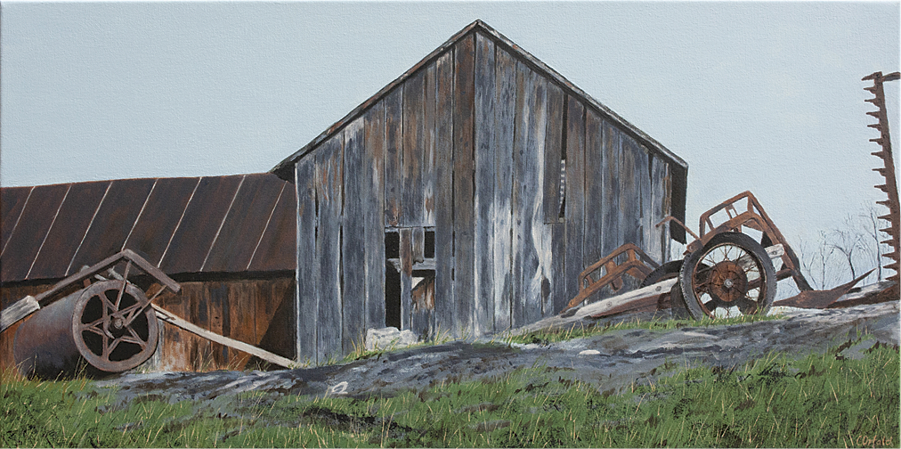
Nick McCabe sent in this gently insightful contribution to theHumm’s Winterwords invitation to write. Artist Catherine Orfald allowed us to use her painting Ontario Farm Remains to accompany it.
This past summer, while tying up our tomatoes in the garden for what felt like the 100th time, my wife noticed our son Theo, in flight, speeding past the garden with a rusted-old-broken-thingamajig in hand toward the woodshed. She, boldly, remarked as to whether he had gotten around to collecting eggs yet. He replied with a threadbare weariness, “Oh I know Mum, I just haven’t had the time.” And he sauntered off behind the woodshed, going to add to his growing collection of ghostly old farm implements he keeps back there: bottomless sap buckets, broken off ploughshares, buggy springs and his pièce de la résistance — an old pry bar we unearthed a couple of years ago, forged and pounded into shape just down the road at the foundry on the banks of Cooligan Creek some 100 years ago. He’s unknowingly creating a makeshift museum in homage to this little place where we live. If “A museum is a non-profit, permanent institution in the service of society and its development… which acquires, conserves, researches, communicates and exhibits the tangible and intangible heritage of humanity and its environment for the purposes of education, study and enjoyment” (Apollo: The International Art Magazine), then our son is the curator of the bygone families that lived and toiled on this little piece of Bastard Township over a century ago. My wife and I are merely its caretakers — here to sweep the floors, tidy up the plates, reorganize the books.
You see, our son is homeschooled — unschooled to be precise. His days are largely his own. He turned eight this past October and lives on a 33-acre beat-up old century farm. His younger sisters were born here. At this point last summer we had been marooned since March. The world was, and still is sadly, reeling from a viral event and our collective response to it. But through the eyes of a young boy, unaware of the unrest out there, it was merely summer. And summer means travel. And observation. And presence. Not of far-flung lands, or of visiting the mecca du jour, but of his homeplace and the literal cradle that nourishes his growing mind and body.
The other day I was cleaning out the cow’s hay rack. “Theo, I found an egg in the cow’s hay bin,” I exclaim, surprised.
“Oh, that’s Barn Cat’s” he replies immediately.
“What do you mean, Barn Cat?” I ask tentatively.
“Oh you know, the white hen. The one with the black tail feathers. I call her Barn Cat ’cause she’s always hanging around the barn like a barn cat.”
All I can do is chuckle and shrug my shoulders and say, “Ok. Makes sense I guess?”
I feel it in my bones that if we lived and experienced the world with but a fraction of the attention and attunement that a young child views the natural world, our collective health and perspective as a species — and therefore all other species on this beautiful planet — would be so much the better. If love is a manifestation of seeing the beauty before you then we would be wise to heed the actions of our children because love is all they see. Love for their animals great and small. Love for their books and the journeys they behest. Love for a vine-ripened tomato and the beauty and consciousness it brings inside them. Love for the summer sun and the warmth on his skin and love for the darkest days and the candles held within. And most importantly, love for themselves.
We are all here in this human form for a particle moment, and as the Annie Dillard saying goes, “how you spend your days is how you live your life”. We would be wise to follow the lead of our children and live our lives free of worry and malaise. Rather, put our faith in the idea that instead of being connected to nature, we are nature. Instead of living in fear of a virus, we live in harmony with mother Earth, knowing full well that how we treat her soils is how we treat the soil within us, and as any good gardener knows, the biodiversity in your soils shows you the health of your garden.
So this winter as my little family turns to the culling of unwanted roosters, we have already asked the boy the pertinent question: “Theo, which rooster should we keep for next year?”, to which he waxes poetic about all the desirable and undesirable traits of the half-dozen or so roosters that grew out of last spring’s hatchlings. This one’s gentle. This one fights with the other roosters too much. That one’s wattle is smaller and won’t be susceptible to next winter’s frostbite. We count on him. His observations matter. He has a voice. His gift of freedom is a gift to all he meets. He is gentle, kind, and curious. And he is of this place.
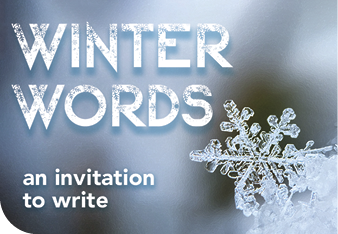
In the December issue of theHumm we issued an “invitation to write” by the name of Winterwords — asking readers to contribute up to 1000 words on the theme of “Back to Better in the Valley” and to contact us if they were interested in facilitating a writing workshop of some kind. The response has been warm and wonderful, and we are delighted to launch the 2021 Winterwords schedule of online events. All are free (or by donation to facilitators), and there is room for additional workshops should more facilitators be interested — just email <kris@thehumm.com> for more information or to register for a Café or workshop. Workshop registration is on a first-come, first-served basis.
We are also still welcoming written submissions that we will publish online, in print, and/or in our weekly Hummail newsletters. Please write from a personal point of view, and consider focusing on our Ottawa Valley community. Is there something that needs to get “better” as we begin to return to “normal”? Is there something that already seems better to you? Are you feeling hopeful? Galvanized? Terrified? Cynical?
Winterwords is open to essays, poetry, short stories (fiction), creative non-fiction, short plays, memoirs and songs. If we’ve left something out, feel free to send us a suggestion! The key is to keep it personal. A personal story has the ability to open hearts and change minds, and that’s the kind of good stuff that strengthens communities — even when (or perhaps especially when) it challenges.
Winterwords Online Events:
Where the Joy Is: Creative Engagement through Poetry workshop facilitated by Susan Gillis (three weeks in February).
“Seems Sketchy…” Comedy Writing 101 workshop facilitated by Rob & Kris Riendeau (three weeks in February).
Winterwords Café – Tuesday, Feb 23 from 7:30–9pm. The topic is Big Magic – The Courage to Write, and it will be facilitated by Sarah Kerr.
Join Robynne Eagan, Kris Riendeau and Sarah Kerr for this second Winterwords Café — a creative conversation with writers in the Valley. This month’s discussion will feature an interview with local artist and writer Rosemary Leach, based on ideas from the book Big Magic by Elizabeth Gilbert. Gilbert believes there are six core values that are crucial to writing over a lifetime: courage, enchantment, permission, persistence, trust and divinity. We will learn about Rosemary’s creative life journey and also invite you to share your own stories of finding inspiration, the magic of the process, the risks taken and the crazy curiosity that keeps us on the “way of creative living” regardless of the outcomes.
Don’t forget to bring your favourite mug — you could win a prize! Email <kris@thehumm.com> for meeting link.
To register for a workshop, attend a Café or find out more about future Winterwords events, email <kris@thehumm.com>. Happy writing!
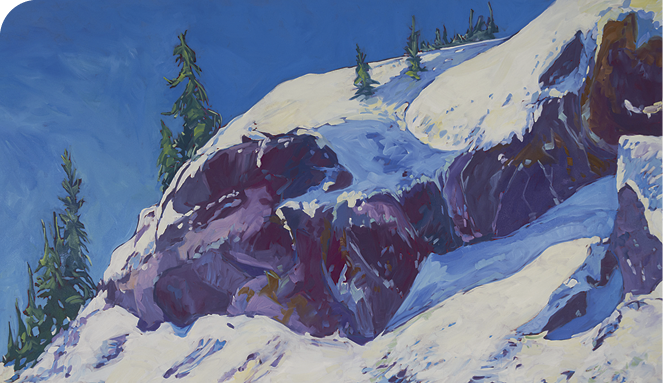

Art… and Soul
When theHumm first featured oil painter Kaija Savinainen Mountain (her married name) in 2007, she responded to my inevitable question as to why she created her art with this statement: “I have a terrible need to create. It chases me.” She has continued her race to the top of her creative powers, but she has raised the bar on her ambitions. Today her answer is: “Nature needs our respect and care more than ever these days, and I challenge us all to be mindful of this through my art.”
Savinainen’s powerful and glorious oil landscapes do that and more. They are a testament to her Finnish sisu — a concept she defines as a Finlander’s inner strength, tenacity and determination, something they rely on during times of difficulty. Kaija is Finnish at her roots and in her heart. She is determined to capture the essence — the basic, singular, and invariable nature — of each scene she paints.
Nature is her chosen subject, and she pursues its essence in each painting with her whole being. She has taught herself to look — how to see the soul of the scene before her. It bewilders her when she walks or runs or skis with others and her companions seem oblivious to the wonders that mesmerize her — the fantastic winter light, the colours in the snow, the stunning composition of the drooping sunflowers against the darkening sky… Savinainen has a special and carefully cultivated talent for portraying the essential being of her subjects, breathing life into what is usually perceived as inanimate.
Delving Deeper
In her blog she writes: “Less is more — had I forgotten that? No need to look for the grandeur and beauty when the small and insignificant is right under your nose. Yes, a good lesson in humbleness. Lesson learned that I had put into practice from my years of observing and painting horses. I paint the broken down, the aged, the ones who do not have perfect conformation. Artists such as Kathe Kollwitz, Franz Marc, Emily Carr to name a few, paint beyond the ‘surfaceness’ of a subject. They delve deeper to find its essence, the truth of what is. And so I painted these courageous little sunflowers.” Savinainen’s stunning paintings of this familiar subject showcase her ability to elevate the commonplace to the extraordinary.
Kaija paints in her studio at their country home at the edge of Almonte, where she lives with her supportive husband Jim, a variety of barnyard species, pets, and wildlife. Her ever-expanding gardens attract orioles, hummingbirds, butterflies and a constant stream of other grateful guests. Her love of horses is immediately apparent in her paintings. On her website at <kaijasavinainen.com> she writes: “…horses have been with me all my life. Caring for them and understanding their personalities has inspired my work no matter what the subject is.”
She tunes out the world with a background of classical music that stirs her emotions and focuses her attention. She frequently starts a painting by rendering a fast, spontaneous, intense sketch. She no longer uses black paint, preferring to create her own blacks, and recently began applying a reddish-orange gesso to her canvases before drawing in her basic shapes. Often her paintings are large.
Even her florals, celebrating her own lovingly tended plants that she describes as her “living palette,” can be four feet tall. To deliver the intensity of colour and the durability that her aesthetic and ethical standards dictate, she uses top-of-the-line oil paints. For years she forced herself to paint with her left hand to slow herself down and tap into the instinctive, subconscious, non-rational energies that supposedly emanate from the right brain.
Savinainen’s Finnish (Karelian) descent is central to her sense of herself and her art. Her grandfather had to flee to Sweden with his family just after WW2. He was wanted by Stalin for his resistance and espionage for Finland when Russia tried to take over this small resilient country. Her family moved to Canada when she was twelve years old, and she spent her adolescent years as a new immigrant in Thunder Bay. Art became her specialty and mainstay as she adapted to her new environment — so much so that she garnered the President’s Gold Medal as top student when she received her Bachelor of Fine Arts from the University of Lethbridge. After her move to the Ottawa Valley in the late 1980s, she completed a B.Ed. at the University of Ottawa and has taught art and art history to students of all ages.
She credits a life marked by geographic displacement as the origin of her strong connectedness to nature. “Being uprooted, I so very much value what surrounds me. From these feelings, I am driven to make art that reflects the layers of nature, and the spirit of the places I am immersed into.” In 2016 Kaija visited her daughter Lara in Yellowknife and participated in the 50K Frostbite Ski Race, racing the last half on her own. The experience stays with her and illuminates her mesmerizing winter scenes. She spoke to me of the northern light, the crispness of the air, the connection to Finland: “bloody cold, but nobody complains because of the raw, intense beauty.”
In 2017 a trip back to Finland with Lara revitalized her connection to her roots. Savinainen is a founding member of the Valley’s prestigious The Ten Collective, and on her blog of Dec. 29, 2019, at <thetencollective.com>, she introduces the body of Finnish art that so influenced Canada’s revered Group of Seven artists. She writes: “The winter landscapes from the turn of the last century painted by Eero Järnefelt moved me deeply. The colours, shapes, forms describing a rugged land was another revelation.” Other paintings by Akseli Gallen-Kalella and Pekka Halonen leave no doubt that Canadian landscape art owes a debt to their Nordic sensibilities. Somehow Kaija manages to both honour and extend these rich artistic inheritances with her energetic, exuberant interpretations of our Canadian Nature.
Like the eponymous activist in The Lorax (Dr. Seuss’s favourite among his 60+ books), Savinainen speaks for the environment. Her recent reconnections with ancestral origins in Sweden and Finland, and visits to previous lives in Lake Superior country and the Northwest Territories, have “reinforced my drive to show nature’s vulnerability, her beauty, her complexities and subtleties through my paintings.” She succeeds admirably in adding her powerful artistic voice to the Lorax’s plea: “Unless someone like you cares a whole awful lot, nothing is going to get better. It’s not.”
Brighten up your winter on Thursday evenings with an exciting series of talks presented by MERA. They will be shown on Zoom, so no danger of Covid or driving on icy roads. The topics include world adventure, animal history, children’s outdoor education, and gardening.
The talks take place from 7–8:30pm on Thursdays until February 18. Admission is by donation to MERA, by sending an e-transfer to <meraschoolhouse@gmail.com>.
Interested viewers need to subscribe in order to receive the invitation to watch the talks, and can do so by emailing Helen at <hmogford@gmail.com>.
Visit <meraschoolhouse.org> to see the list of speakers and topics, as well as all the other exciting things happening at the schoolhouse.

It is the best of times, it is the worst of times. Or as my son said: “We are blessed to live in these times and we are cursed to live in these times.”
And so, in these times, libraries have become more nimble and essential than ever. This article tells the exciting “tale of two libraries”: the ever-evolving “traditional” library and the contemporary, also ever-adapting, tech-based library. And guess what? Both are thriving in 2021. Learning is a life-long adventure is the apt tagline at <missmillslibrary.com>.
Curbside or contactless pickup at both branches of the Mississippi Mills Public Library (MMPL) is extremely busy. Every request that is available for pickup is packaged for patrons and placed alphabetically in our library lobbies.
For those who like data, during the twelve days the library was open between January 4th and 16th, MMPL checked out 3000 books and DVDs from the library collection (and packed them all up) as well as 70 craft kits! From the digital library, check outs included: 830 e-books and e-audiobooks via Libby/Overdrive and Cantook Station as well as 207 streaming films via Kanopy (where thousands are available free with your library card). This is an average of 342 items (physical, digital, English and French) borrowed each day during lockdown!
Members of MMPL use the online catalogue, or they email or phone the library to reserve and request books, craft bags, DVDs and more. Typical patron requests in lockdown include:
“I have a 4- and 6-year-old; please choose ten storybooks for each. The 6-year-old is starting to read and really likes junior graphic novels.”
“Any new movies received? Please choose four like the ones I’ve borrowed in the past. I like Murdoch Mysteries, Shakespeare and Hathaway.”
“I saw the Craft Bags on Facebook. Can I please get two for kids and two for teens, and the new Obama book?”
“Any new true crime books? Or CBC Massey lectures? I also like musicians’ bios…”
And yes, the library has them all!
MMPL launched new programs in late 2020 and early 2021 that provide “Science, Technology, Engineering, Arts and Math” (STEAM) tech-based, online learning. These programs happen weekly and are slated to continue indefinitely. Community interest is off the charts! Have you heard of ozobot? It’s a robot kids use when learning to create with code. Ozobot coding, video game design, web and app design are all programs available via the library. Before lockdown a few in-person LEGO robotics workshops were also held; since lockdown, online workshops only, but we look forward to the future!
Free access to the MMPL technology tutor continues during lockdown by phone. Phone or email the library to make an appointment to learn about iPads, e-readers, tablets, smartphones, Facebook & Twitter, YouTube, photo editing, managing your online business presence and other topics. On Facebook, on the website and in the e-newsletter, patrons also learn of timely book and DVD releases, knit kits, disc golf sets, READy to go backpacks of storybooks, pre-school and seniors craft bags, and more! (Subscribe to the e-newsletter from the homepage of the website.)
A library is a “great leveller” in a community. There are no hierarchies in libraries. Everyone has the same access. Everyone is welcome, respected, valued and served. During our current reality — of lockdown, struggle, discouragement and fear — libraries are still reliable, still offer comfort and excitement!
Please visit <missmillslibrary.com> or find us on Facebook for more information. All libraries in Lanark County offer contactless pickup and much needed positive distraction. Take another look at your local library!
Library Websites:
Almonte and Pakenham; Arnprior; Carleton Place; Lanark Highlands; Perth; Renfrew;
Smiths Falls
The pandemic has caused a significant number of difficulties for many industries and communities, but one vibrant community is finding new ways to foster creativity during a challenging time.
The Ottawa Valley is full of creative writers and readers, but Covid has created a roadblock for many. While writing may seem like a solitary activity, growth and development comes from the brainstorming and sharing of ideas through the workshops, gatherings, and in-person events that have been casualties of this year. These difficult times present an unprecedented challenge for everyone, but there are many new ideas that are surfacing to bring people together.
How better to connect with other readers, writers and literary aficionados than through book launches, author talks, creative writing workshops or book clubs? The past year saw the temporary end of in-person gatherings, but creative and industrious minds are coming together to build new online gathering places. Lockdown or not, there are plenty of ways for interested writers and fiction-lovers to unite and share in common enjoyment of the written word.
Writer, editor and teacher Robynne Eagan is actively working to find new opportunities to connect people and to bring the Ottawa Valley writing community back together. As she describes, she is looking for ways to “let writers engage together in this time.” Working on projects such as Winterwords and the Lockdown Writer’s Café, Eagan is seeking to discover and build talent on a local level and to feature more writers living in the Ottawa Valley.
“We’re looking at the pandemic and how it’s affected people. We want to provide some sort of platform for people to write about it,” Eagan shares. She hopes to help people process everything that this pandemic has wrought, whether positive or negative, and to gain insight through their writing.
“It’s a cool area, the Ottawa Valley,” she explains in an interview. “I think there’s a lot of hidden talent, and I am so inspired by the people you find.” This community is full of creative writers and poets. In this time of struggle, it is uplifting to discover that there are some who are looking to nurture this raw talent and to share it with others. Writers and readers alike are uncovering fresh new ways to connect with the literary community; not just locally, but around the globe as well.
Eagan says, “The world is open to people now. You can watch any conference and see all kinds of great writers.” Conferences across the world have established themselves on digital platforms and have extended their reach worldwide. From BookCon to the The Hay-on-Wye Literary Festival, “you can go online to writing conferences around the world and you hear all of these famous writers,” Eagan describes. “It’s great.”
Connection is possible within one’s own backyard also. Locally, writing groups and author events have moved online and provide ample opportunity for people to tune in from the comfort of their own homes. By way of connecting the literary community against the odds, the Ottawa Writers Festival ran their Fall season virtually this year, and announced virtual programming for the Spring of 2021. Find more information about their upcoming season at <writersfestival.org>.
Candace Woolley of the Bonnechere Authors Festival says her hope is to consider moving the festival online to a virtual forum in 2021. Plans are still in the works, but festival attendees can stay up to date by visiting <bonnechereupl.com/baf.html> or contacting the Bonnechere Public Library.
Online video meet-ups also provide a forum for those interested in creating or joining a book club to meet virtually on a regular basis. Eagan outlines her own experience with writing groups online. “I’ve found with my two [creative writing] groups, we’ve gotten a little more personal. There’s a connectedness that wasn’t there before.”
Although writing is a solitary activity, it is easy to feel disconnected or out of sorts without the regular in-person events and sessions to brainstorm and share ideas with others. Eagan explains: “a lot of the writers I’ve talked to are kind of in shell shock. They’re really preoccupied and are having a hard time concentrating, and even reading!”
The pandemic seemingly provides ample opportunity to create and consume new literature, but the motivation is often absent. There is a lack of productivity, but as readers and writers begin to venture online and discover new ways to interact, there are increasingly more ways to combat the fatigue that this pandemic has brought. Zoom and FaceTime allow book clubs and writing groups to connect virtually throughout the winter, with the hope that perhaps in the spring, the possibility of meeting face-to-face will arise.
Staying connected to the literary community may look a little different for each person. Subscribing to the e-newsletters of local bookshops and festivals or following their social media pages allow readers and writers to get relevant, real-time information about what’s going on throughout the turbulence of the pandemic.
For readers seeking to remain connected in this tumultuous time, Almonte’s Mill Street Books offers a regular newsletter to keep the community abreast of their offerings and their pandemic programming. In addition, owner Mary Lumsden explains that their regular book club has moved to Zoom, they continue to offer personal recommendations to readers, and they have even hosted a virtual event with author Tim Cook (The Fight for History).
Challenging times and circumstances allow for transformation to take place. Instead of isolating people in their homes, the pandemic allows people to connect on a very open, human level, setting the stage for creativity to blossom. It may be virtual, but the community is able to rally together and find commonality in this shared experience.
There is so much growth and connection happening within this community and so much to look forward to in the months to come. Although it is easy to feel isolated, the support is there. Eagan says, “It is so inspiring how people are rolling with things and finding ways to get around it and keep things going no matter what it takes.”

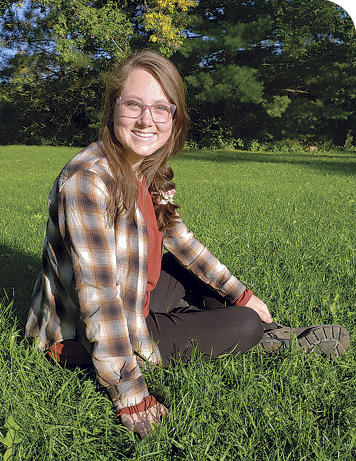
I find it very encouraging to meet young enthusiastic gardening entrepreneurs. Shelby Gibson’s business in Arnprior, Sovereignty Gardens, is in the beginning stages. She is planning to offer a variety of seedlings (vegetables and herbs mainly). They will be posted on her website <sovereigntygardens.ca> for purchase in late winter and pickup in the spring. She is also developing herbal products.
Her motivation for gardening is one that really resonates with me. Basically, she gardens because she can’t help it. Like me, she started at a very early age with her grandmother, and gardening has become an essential part of who she is. She finds that it truly is a hopeful act to plant a seed and believe that it will rise from the ground and turn into something, particularly something that we need such as food and medicine.
Shelby’s formal education built on her early knowledge of plants and horticulture. She completed a Bachelor of Science (Honours) with a joint major in Biology and Environmental and Resource Studies at Trent University, and became increasingly involved in food security issues. After her undergraduate degree she completed a Master of Environmental Studies at York University with a concentration in Sustainable Agriculture and Biodiversity Conservation. Her goal was to gain an understanding of how we can grow food in a way that works in conjunction with the natural world — her particular focus was on pollinators. She has furthered that research and is currently working on her doctorate, focusing on the role of wild bees to North American Indigenous food and medicine plants.
Sovereignty Gardens provides people with organic heirloom varieties of medicine and food plants, including seeds and seedlings. There is a focus on true native plants, as opposed to non-native or hybrids of native plants that are often available in nurseries.
Shelby has also started to create herbal products, such as balms and butters, using plants grown by Sovereignty Gardens. When her first child was born with severe eczema, she started researching how plants might be able to help and created an eczema lotion using natural products including garden-grown calendula. She has begun creating other products, which can be found on her Facebook page (@TheBalmMom) as an alternative to the conventional options available for personal care products.
Shelby’s future business plans include accessing a larger portion of land that would include construction of greenhouses (for seedlings), and planting of perennial plants (native plants and herbs). Her intent would be for this to be a place for growing and selling plants as well as a garden demonstrating what gardening in connection with nature can look like. Once this is established, Sovereignty Gardens would offer a variety of educational opportunities and workshops.
She observes that it is becoming increasingly important that people build resiliency into their lives. One way this can be accomplished is through growing our own food and medicines. Sovereignty Gardens wants to provide the opportunity for people to have access to the basic necessities they may need for gardening — which may in turn lead to, even if in a small way, self-sufficiency.
Shelby’s approach is focused on gardening in conjunction with the natural world. Diseases and pests are dealt with by addressing imbalances in the ecosystem. What she learned from studying Permaculture is that we can learn a lot by sitting back and watching nature and opening up the opportunity to learn how things run most efficiently.
Shelby believes that food security does not go far enough. She prefers to focus on food sovereignty. Food sovereignty means having the power and ability to grow our own food, including access to seeds and seedlings and the knowledge and education of how to grow food. Focusing on food security is a short-term goal, while bringing the focus onto food sovereignty can actually begin to provide resolution to long-term problems, since it gives people the ability to feed themselves (rather than a continued reliance on someone or something else). Food sovereignty is about justice for people and building a more equitable system where people have the power to control the means of production, policies, and distribution of food.
Shelby will be able to supply limited quantities of seedlings this spring. She asks anyone interested in ordering seedlings to contact her through the “Contact Me” section of her website to discuss this further. She will have multiple varieties of common garden plants available including tomatoes, peppers, basil and beans. She is open to customizing orders and growing what people want. One of her first customers is the Lanark County Food Bank.
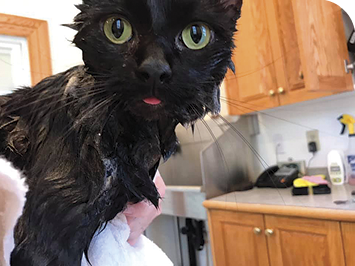
What is a Certified Feline Master Groomer and how can one help you and your cat? For Cassandra Prince, co-owner of The Cat’s Meow, the answer is multifold. Regular cat grooming can help owners who suffer from allergies, find themselves cleaning up an excess of shedding hair, and are frustrated by cats clawing the furniture. Your cat can benefit tremendously by doing away with painful tangles, knots and clumps, greatly reducing hairballs, and maintaining a clean coat, ears, eyes and trim nails.
Becoming a CFMG (Certified Feline Master Groomer) has been a few years in the making for Cassandra. She first passed four written exams which were proctored by Erika Heeson at The Perth Library. Then she built, with help from her brother-in-law, a boutique cats-only grooming salon equipped with specialized tub, dryer and cat-grooming tools. All of this was to complement the existing cat boarding facility at The Cat’s Meow Luxury Inn in Maberly.
Finally, last December, she travelled to Regina to apprentice with a Master Groomer and to pass five practical hands-on grooming exams. The final word came from The National Cat Groomers Institute in South Carolina who issues the certificate.
“I was so excited to become the 336th Certified Feline Master Groomer world-wide! It was a real achievement to hold that piece of paper in my hand. I am so excited to offer these services to my current clients and to welcome new clients from all over Lanark County… I have been trained by the best in the world and I have hours of studying and learning behind me.”
Cassandra says that grooming cats is all about the bath. To get a really clean, degreased and shiny coat, your cat needs to have a warm massage shampoo bath. There is no getting around that. “I have shampooed dozens and dozens of cats and I can tell you, most cats, after getting over the surprise of being wet, will settle right down and enjoy the process of being bathed.”
Why do you need a degreased cat? Isn’t it the case that cats groom themselves? “Absolutely not”, says Cassandra. “Show me a cat that can give themselves a shampoo bath, which is necessary to prevent oily build up causing knots and tangles, dandruff, skin acne, and stud tail (greasy build-up at the base of the tail). Show me a cat that can trim their own nails or properly clean out their eyes and ears. Show me a cat that can shave out painful matting and pelting. All of these things only a qualified cat groomer can do.”
Cassandra says that she tailors each groom to the individual needs of the cat and listens carefully to the owner in order to address the problem he or she has come in to solve. “Not every cat is a good candidate for a lion cut,” adds Cassandra.
Cassandra begins by assessing the cat’s temperament and condition with which they present, and then offers solutions that can range from nail caps as a humane alternative to de-clawing (which Cassandra would never condone) to sanitary trims to complete shave-downs where all the hair comes off. “I prefer to save the cat’s coat when possible, but if a cat is badly matted the most humane solution is to take it off.”
She encourages cat owners to come in and see her before it gets to that stage. Getting a cat on a regular schedule will not only acclimatize cats to the grooming salon and routines so that they look forward to their grooming appointments, but also benefit clients knowing that they have someone looking after the needs of their cat.
Regular grooming can keep allergy sufferers together with their cats. Cassandra is particularly gratified when she is able to keep families together. “People who are allergic to their cat are not allergic to the cat’s hair but actually to the protein in the saliva that has been deposited on the coat. Regular shampooing can really help people suffering from allergies, and that means fewer cats ending up in the shelters. That makes me super happy!”
“I have clients whose cats have had to have operations to remove hairball blockages, which is a life-and-death situation for the cat,” she adds. “Bringing your cat to a groomer for regular de-shedding can greatly reduce the hair your cat is ingesting and may save your cat’s life.”
The Cat’s Meow website offers a fun selection of cat shampoo scents with a local twist. You can choose from, among others, Lanark Highlander (for the rugged cat; a scent made to highlight an independent nature), Pink Lady Slipper (a feminine scent named after the delicate orchid found in Ontario’s forests) or Perth Prancer (for the active cat with a spring in her step).
The Cat’s Meow turns 24 this year and was in fact the Ottawa to Kingston area’s first cats-only hotel. Nestled in the Perth countryside, The Cat’s Meow began as Lanark County’s best kept secret — a single-purpose cottage catering to just a few local felines. But over the years the news spread that it was indeed the cat’s meow and the place to send your special four-legged family members. In fact, the operation now features two luxury cat “hotels,” exclusive 100-square-foot private cage-free accommodations, and huge cedar decks.
“Covid restrictions have really hit our cat boarding business hard. We are hoping that the addition of the boutique cat grooming salon will bring a wider range of clients to our door,” explains Cassandra.
People who are working from home and spending more time with their pets may really welcome the idea of a clean well-maintained fluffy kitty. One with whom they will now love to share their pillow, knowing their little paws have been thoroughly scrubbed clean.
The Cat’s Meow Facebook page features videos where you can see happy cats being bathed. Check them out at <facebook.com/CatsMeowInn>.
The Almonte Lecture Series promised to return, and they are — via Zoom! They have fascinating lectures lined up for the last Friday evening in February and March, and welcome everyone to attend virtually.
On February 26, Professor Richard Van Loon, former president of Carleton University, will present “Hard travel: Alex MacKenzie from Canada by land 22 July 1793”. Dr. Van Loon’s interest in First Nations people will make this lecture particularly informative as he combines the European quest for territory and trade with the cultures of Indigenous people.
Then on March 26, Almonte resident and former host of BBC Radio’s A-Z of Antiques, Janet Carlile, has offered to lecture about the world of antiques and their collectors. You can read more about Janet’s background and interests at <janetcarlile.ca>.
The lectures will be presented via Zoom, beginning at 7:30pm. Visit <almontelectures.net> for additional details on the series with particular attention on how to sign up for these virtual presentations. As usual, these lectures are free, but donations are always welcome. Contact <Almonte.lectures@gmail.com> to sign up or to get more information.
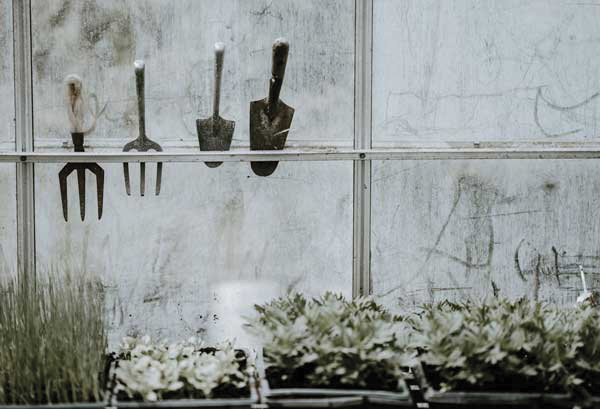
Frank Hirst is the author of A View from the Forest — a non-fiction collection of stories about his life. Born in England in 1939, Frank came to the Ottawa Valley in 1948. He taught for two years each in Ottawa, Northern Ontario and Dawson City, spent four years at Queen’s and retired from high school teaching in 1990, returning to his farm. Frank lived off the land for the most part in the Ottawa Valley, in a log cabin he built in the bush with his wife and kids. Frank’s adventures, captured in ink, have been low-key but memorable in their own unique ways. Here is his submission to theHumm’s Winterwords invitation to write:
I’m going to start with a repeat of the first part of our 2020 Christmas letter: “We’ve had Covid around here since just after last Christmas. We trust that you are well and are doing fine in spite of it. Our lives have been changed as we are sure that everyone’s has been. Since about March we have been locked in the house and our daughter Laurie has done all of the shopping.”
It’s not too bad being cooped up like this. It’s not as if we were living on the eighteenth floor of a huge high-rise complex in a very small apartment in a large city somewhere. And all of the amenities on the ground floor are shut down: the exercise room, pool, coffee bar and community spaces. And outside the city has closed all the parks so there is nowhere to walk.
Those may be major contributing factors to all of the anger that is out there, as well as all the depression and spousal abuse.
By comparison we are blessed. My wife Jean and I live in a semi-autonomous granny suite in the basement of the house we built. We each have a bedroom. There is a bathroom and a kitchenette. And the highlight of it all is our magnificent greenhouse, fifty feet long and twelve feet wide, fully insulated and heated with a small propane stove. It is completely crammed with house plants which go outside when the weather gets warmer. Tending the greenhouse was largely how we weathered the first lockdown. We also have a furnished living room at one end. As an aside and before you start to think about how privileged we are, you must know that there has been much sacrifice. We built the house in pieces, living in a semi-finished part while we worked on another area when we got home from work. We took no mortgage but built as we could afford. We were years before we got any new furniture and have always driven used cars, some of them certifiable clunkers.
All of this to explain our self-sufficiency and our reason to be able to weather Covid lockdowns.
We are further blessed by our daughter. As a teenager she worked in a nursing home and what she saw even then convinced her that her parents would never live in one. So no long-term care home for us, and she looks after us quite well. Granted we are not incontinent or disabled in any way, although I have bad knees which because of a catastrophic heart attack cannot be repaired. So walking is a problem. And Jean’s arm and shoulder require regular doses of pain killer. Other than that we are blessed.
We went out to the greenhouse this morning, later than usual, with our beverage of choice. There was no rush to be elsewhere. The getting up and going or doing phase of our life is over. Jean says that among the native Canadians we would be the cherished elders. We would sit by a fire with a blanket around our shoulders and watch, just watch.
The watching part is pretty much how we have weathered Covid so far.
But now we are well into the second wave of Covid, an equally stringent lockdown is in place, and we are told even more forcefully to stay home. The word being bruited about by politicians and health care officials? Dire! In addition, a more virulent form of the disease is taking hold and our chance of getting vaccinated is months away.
So we will continue to do what we have done. We will stay home, spend time in our greenhouse. We had planned to go into town regularly to walk a cleared sidewalk and get some exercise, but we have chosen to obey the stay-at-home mandates. There is a treadmill in the greenhouse, and I try to do some other light exercise in addition.
And in three short months we can start putting some of the more hardy plants outside.

Barbara Bolte sent in this evocative Winter Haiku in response to theHumm’s Winterwords invitation to write:
Do not touch me with
your icy fingers —
I cannot give you my warmth.
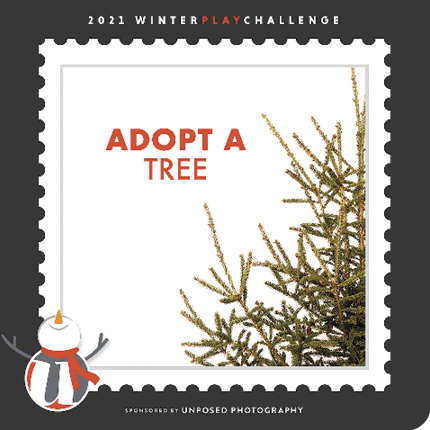
Lockdowns and Covid restrictions driving you stir-crazy? The folks at Unposed Photography have come up with something fun to help out over the next couple of months. This is a not-for-profit, just-for-fun initiative they are calling the Winter Play Challenge.
They’ve created a set of thirty challenges that are designed to be playful and fun. Sample challenges include:
Building an awesome fort: rearrange the living room furniture, hang blankets over the bathtub…
Eat breakfast for dinner: waffles and Captain Crunch? For one evening, why not?
Childhood Story: ask an adult or senior to tell a story about their childhood — it will make their day, and yours also.
You can share pictures of your fun on the Winter Play Challenge Facebook group or on Instagram. The challenges are designed to be accessible to anyone, anywhere, any age group, and are lockdown friendly.
There is no registration fee, but if you complete the challenges you receive a certificate and also have the option to purchase a medal (profits from the medal purchase go to a mental health charity). Find out more at <winterplaychallenge.wordpress.com>!
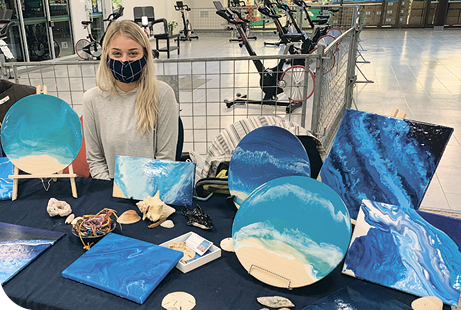
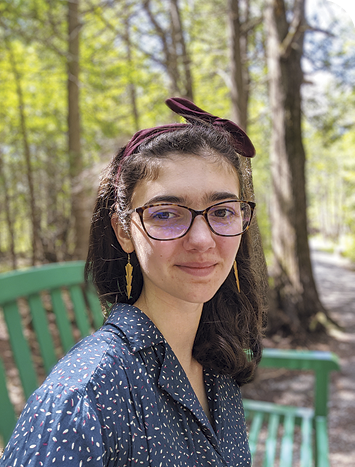
“I am inspired by empowered young people coming to realize our place in the world as the last generation to challenge Climate Change and environmental injustices,” says Ahlena Sultana-McGarry, one of the facilitators of Climate Network Lanark’s Youth for Climate Action group. She speaks with a quiet confidence which seems the right note to strike with the twelve young people from across Lanark who recently assembled as strangers for the group’s first meeting.
Sultana-McGarry, a graduate in Cross-Disciplinary Art from the Ontario College of Art & Design, will be training with David Suzuki’s Future Ground Network and then facilitating the CNL Youth Team as they collectively build a local vision for change. “Looking into my own life experiences, I became aware of a severe disconnect in our education system in responding to the climate crisis, and in fostering space for young people to engage in these critical conversations and to act. The Youth for Climate Action group was formed in recognition of this.”
Meeting each other for the first time in an online format, the group listens quietly to start, but it becomes clear that if action is the panacea for fear, they want to get moving.
“All these new people moving from Ottawa already expect organic waste pick up — how can we leverage that expectation?” “Local businesses often have the desire to change their practices, but not the time to figure out how to do it — how can we support them?” “Can old people just please stop making Tik-Tok videos to try and influence us, and let us do the influencing?”
Inside each of those questions is the seed of an idea, and with the knowledge that municipalities influence over 50% of greenhouse gas emissions, the team is set to find ways to create the changes required for a livable future.
Many of the members of Youth for Climate Action are already involved in causes in their community or school. Each time one of them makes a step, they are contributing to a culture shift that keeps gaining traction. Here are two who are taking their message out:
Emma Andrigo —Encouraging a Change Mindset
“Emma! That girl you talked about last year is on the news!” A teacher at Notre Dame High school rushes excitedly to deliver the news. The girl in question was climate justice wunderkind Greta Thunberg — and long before her name was a household one, she had been the subject of one of Emma Andrigo’s high school presentations.
“I wish I’d heard about her in the school context. We have a unit on Climate Change, and they tell you about the science behind it and all the reasons it is terrible and urgent, and then we move on to the next unit,” says Andrigo. Young people leave these classes upset, shrug their shoulders and push it from their minds.
Thunberg’s Ted Talk, which inspired Emma’s school presentation, was a galvanizing moment. “I had been feeling so overwhelmed that it pushed me to a place of ‘why bother doing anything’, but then here was someone my age saying ‘You can make change’ and that shifted the entire way I approach the role of the individual in Climate Action”.
Part of that action involves storytelling; last year while Andrigo was acting in a short play she wrote about zero-waste living, she caught the eye of Pinegrove Productions’ Franziska von Rosen. Von Rosen was looking for a young person to work with her on creating a series about youth action around climate change. Together they are working on a pilot that takes on the environmental impact of fast fashion.
Emma considers art to be a form of action as it encourages people to be open to change. “We need large community demands before governments and corporations are going to make big changes. But if change is going to happen in a community you need people to be open to it! So step one is putting people into a change mindset.”
Ellie Murphy —Thinking, Talking, Asking
It was Shark Week that turned then 8-year-old Ellie Murphy into an environmentalist. Her brother was watching for the blood and guts as she was falling in love with the great white sharks. When she learned they were dying with bellies full of plastic, she took her first step into activism and vowed never to use a single-use water bottle again. “As apex predators, great white sharks are integral in regulating the ocean’s entire food chain — from the giant blue whale to teeny microplankton. If you take any piece away, you jeopardize the balance of the ocean.”
The relationship between Climate Change and ocean plastics is not immediately evident, but when plastics are exposed to the elements and begin to degrade they release methane and ethylene, which together put climate change on steroids.
Murphy, now 21 and currently on a year-long pandemic hiatus from studying Marine Biology at Dalhousie, is taking the time off to explore and create eco-initiatives in her home town of Smiths Falls. She was selected as a UN Junior Ambassador to create an initiative to better her community, reflective of the UN’s Sustainable Development Goals.
She knew that plastics were going to figure into that initiative, and that in her landlocked community, having a way to grab people’s attention was imperative. Her current project involves selling artwork made with biodegradable plant-based eco-poxy — an alternative to destructive plastic resin. Her setup involves two tables at markets in the region: one for art, the other for information about ocean plastics. This sets the stage for her ultimate goal: conversations that get people thinking, talking and asking.
A tangible empathy for the oceans and their inhabitants makes Murphy an emotional spokesperson for climate justice — an empathy that extends to people who don’t feel as strongly about the environment as she does. “I think that often people just don’t know what’s happening — because if everyone knew why this was so important, they would already be taking the steps, so I’m just trying to bring awareness.”
Within Climate Network Lanark, Ellie is hoping to be the Lorax of the ocean and speak for the seas — keeping in mind that regulating and taking care of our water sources is in itself a nature-based climate solution that looks to the wisdom of mother nature to fight increasing rates of climate change.
Join the Network!
The Lanark Youth for Climate Action group meets on the first Tuesday of each month from 3–4:30pm via Zoom, and people can get more info by contacting <lanarkclimate@gmail.com>. New youth members age 13+ are always welcome. To register, ask questions, or if you need access to a computer for the meeting, send us an email or give us a call at 698–9343.
Inspiring Resources
Instagram: <fridaysforfuturetoronto>, <piecesagainstplastic>.
<unac.org/generationsdg>: a Government of Canada website with loads of information on participating in meeting our 2030 Climate goals.
How to Save the Planet: A podcast for people exploring jobs in climate change and who want to learn how to make a difference.
All We Can Save: Truth, Courage and Solutions for the Climate Crisis: a collection of essays from women at the forefront of the climate movement.
The Good On You app: an app that rates the ethical and environmental impact of various clothing companies.
One Small Step: one of the rare documentaries about climate change that isn’t all doom and gloom.